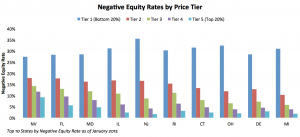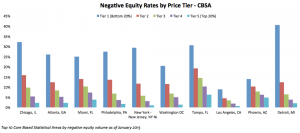From HousingWire:
TransUnion: Student loans do not impact housing
Despite the level of student loan debt rising to well above $1 trillion, young buyers are not being inhibited from obtaining a mortgage due to their debt, according to a new report from TransUnion.
According to the latest report from the Federal Reserve Bank of New York, student loan debt rose $32 billion in the first quarter to $1.19 trillion total, but recent reports from Capital Economics have suggested that growing amount of student debt isn’t actually preventing millennials from buying a home.
A new report from TransUnion shows that not only are younger consumers with student debt able to get a mortgage, they are also quite adept at making their payments as well.
According to the TransUnion report, consumers between the ages of 18 and 29 with a student loan in repayment are “generally able” to gain access to new loans and perform as well or better on those new loans as similarly aged consumers without student loans.
The study also showed that in only three to six years, student-loan consumers in their twenties have been observed to pass similarly aged consumers without a student loan in overall loan participation rates on mortgages, auto loans and credit cards, an act the study calls the convergence point.
“Going to school impacts young consumers’ access to credit; while in school, students may be less likely to have a job and generate the income necessary for loan approval. However, most catch up once they leave school—and their ability to catch up has not changed over the past decade,” said Steve Chaouki, executive vice president and the head of TransUnion’s financial services business unit. “Our study demonstrates that consumers in their 20s with student loans in repayment—that is, once they finish school—are in fact able to access credit at levels similar to or better than their peers who do not have student loans.”


